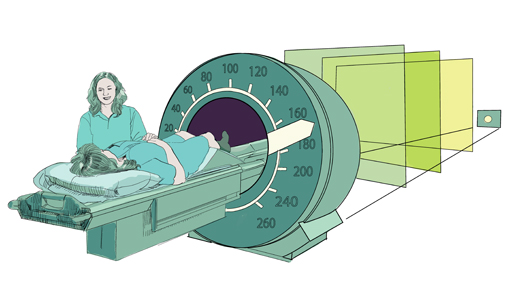Eight years ago Australian-born mathematician Terence Tao launched a completely new and highly sophisticated mathematical theory which may be set to bring about enormous savings in the health sector as well as in the oil industry. The theory is called compressed sensing, and enables compressive sampling without having to look at the raw data first.
The method, which is highly calculation-intensive, may promote faster hospital examinations by reducing the number of measuring points used for MR examinations to one-sixth of the present level. The method may also bring about major savings for the oil industry by enable us to collect fewer data points while ending up with equally good information.
Research fellow Andreas Solbrå, whose background is from mathematics, physics and calculation theory, is the first person at the University of Oslo to have put this theory to use.
